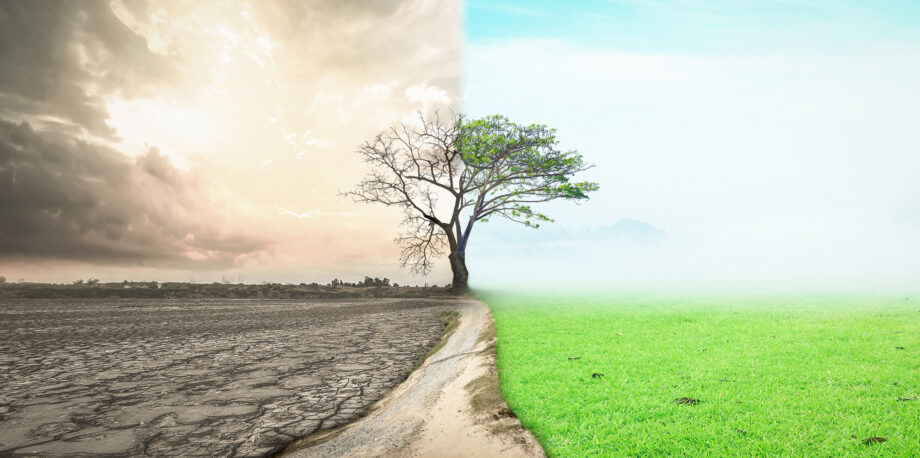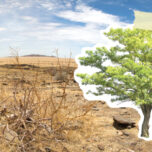July 14, 2020 — Even before 2020, signs of transformation were everywhere. Increasingly dire climate science continued to make the case that a changing climate threatens to alter the world as we know it. The International Science-Policy Panel on Biodiversity and Ecosystem Services created a work program that includes a “thematic assessment of transformative change.” Calls for transformation even became part of the U.S. presidential election, with Senator Elizabeth Warren regularly describing the need for “big, structural change.”
And then came 2020. First, the Covid-19 pandemic exploded, straining economic and health systems around the world. In May, a white police officer in Minneapolis killed George Floyd, a Black man. Floyd’s killing sparked mass protests against police brutality and racial injustices connected to health, safety and wealth around the world. These happenings have thrown individuals, communities and the entire global society off kilter. We are in a period of transformation.
In this transformative moment, how do we make sense of what’s happening? Even more importantly, what can we do to help steer change toward a more desirable future?
The Nature of Transformation
What exactly is transformation? Definitions vary, but they all come back to a basic idea: a fundamental change in a system and its form, structure, meaning or relationships.
“With a transformation, you almost have to have a breakdown of what exists,” says Karen O’Brien, a professor of sociology and human geography at the University of Oslo.
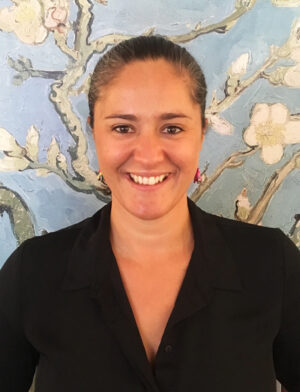
Transformation scholar Laura Pereira, who learned about transformation firsthand while growing up in South Africa, says, “if you’re not feeling uncomfortable, you’re probably not doing it right.” Her advice for navigating transformation? Prioritize key values. Photo courtesy of Laura Pereira
Transformation scholar Laura Pereira grew up in South Africa, a personal experience to which she traces her academic interest in transformation. Born in 1985, she experienced growing up in South Africa through the transformation from apartheid to democracy. In 2005, she was elected to the student representative council with a group of independents that swept out an alliance of leadership associated with major political parties that had been in power for years at the University of Witswatersrand (also known as Wits) in Johannesburg. The experience of trying to make changes as part of student government helped Pereira, now a postdoctoral research fellow at City University of London, better understand just how difficult it can be to create transformative change.
A decade later, Wits was at the center of a South African higher education movement called Fees Must Fall. According to the New York Times, “The student actions have shed light on a much broader national dissatisfaction with the glacial pace of transformation, as South Africa’s policy of giving blacks equal representation is called.”
The social transformation in South Africa highlights the idea that true transformation takes time. Historically, transformations have unfolded over at least decades-long time scales — 60–300 years, according to research by Michele-Lee Moore, a strategic advisor for transdisciplinary education at the Stockholm Resilience Centre, and others.
Furthermore, both the South Africa example and Moore’s research show that even though transformations have a long time scale, there are key transformative moments along the way. In these moments, change can play out rapidly, particularly when lots of people recognize that a system isn’t working. According to O’Brien, “disruption at scale shows what works and what doesn’t work.”
Pereira connects that observation to this moment. “The pandemic has crystalized how broken our systems really are,” she notes.
Feelings of Chaos
In this moment of fast-paced transformative change — of climate change, biodiversity loss, pandemic and increasingly transparent racial injustice — it’s not surprising that many feel uneasy.
“If you’re not feeling uncomfortable, you’re probably not doing it right, because fundamental reconfigurations of our system, no matter how much they’re failing us, is still something that we are not comfortable with as humans,” Pereira says.
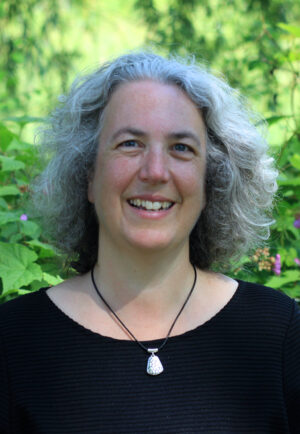
Elizabeth Sawin, co-director of Climate Interactive, says her “sense of entering rougher and rougher waters” has been increasing in recent years. She and her colleagues have developed a tool that people and organizations can use to think through policy scenarios around climate change. Photo courtesy of Elizabeth Sawin
What do transformations feel like? “I think I’m always trying to figure that out,” says Elizabeth Sawin, co-director of Climate Interactive, a think tank that brings system dynamics modeling to addressing climate change “What does it feel like? Or to what extent is what we’re experiencing now part of transformation? And, I think I’ve been doing that more in the last couple of years as my sense of entering rougher and rougher waters increases.”
Moore cautions about the unintended consequences of systems breaking down really quickly.
“Because there’s often agreement about what needs to be dismantled, things can come down fast,” she says. “But if there isn’t that same level of agreement, and there often isn’t, about what we move into, that transition can be incredibly violent for people who are already marginalized in a system, people who are fighting for change. And so [there is] this question of how to do this peacefully.”
Navigating Transformation
What can we do to productively navigate transformation?
A good first step is being aware that the systems we live in are complex. Sawin has spent much of her career making modeling tools for complex systems, which she says has “honed her intuition” about what may happen as changes plays out. Her organization has a created a simulation tool to help people and organizations think through policy scenarios on climate change.
“It’s interesting to say this as someone who works with tools that allow people to test alternative futures,” Sawin says, “but I think every year I get a little more convinced that we don’t really get to manage our way through this transformation — that it’s too big, too complex, too many feedback loops and nonlinearities and delays, which doesn’t mean there’s nothing to do. It just means there isn’t a five-step plan.”
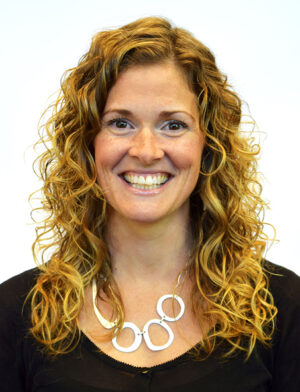
Transformations unfold over decades-long time scales, says Michele-Lee Moore, a strategic advisor for transdisciplinary education at the Stockholm Resilience Center. She recommends looking at history for insights on how to handle transformations well. Photo courtesy of Michele-Lee Moore
Moore recommends looking for inspiration from people already building new systems or solutions that are working — even though these inspirations are often small scale or marginalized in the current system. “In this moment, there can be a tendency to look for the new and shiny,” she says. “But actually, if you’re going to make transformative change at a large scale, you want the things that have been tested.”
Pereira describes approaching work during transformative times by prioritizing key values you want in a future system. “We may not be able to control exactly what it [a transformation] looks like, but we know that we can involve more diverse voices and more marginalized voices. There are clear things that can be done if that’s the kind of world we want to emerge. We want it to be open, and diverse, and plural, then just having one person make a decision is clearly not the pathway that you want to go on.”
Sawin points to two principles from the study of complex systems that she finds helpful for acting in the face of so much uncertainty: emergence and coherence.
Emergence posits that building relationships among different sectors, organizations and disciplines foster unexpected and beneficial surprises at moments of opportunity.
Building the potential for emergence, in part, involves intentionally building relationships across all kinds of difference and trusting that good things will emerge from these relationships.Coherence is the idea “that so many patterns in nature are self-similar because in different scales or in different contexts they’re operating by similar sets of simple rules,” she says.
There is “this sense that there’s something in common between the racial equity crisis, the gender equity crisis, the climate crisis,” Sawin says. “Each of those is kind of a battle between simple rules that are based on domination and supremacy or simple rules that are based on collaboration and equity.”
She notes that in acting with coherence in mind, each of us “a dozen or more times a day… has a chance to figure out which simple rule are we going to align with.”
According to Sawin, one of the things that make these two principles so powerful is that they are accessible to pretty much everyone.
“Emergence and coherence, I think, are always going to be good bets,” she says.
Pereira weaves the ideas of looking for people who have been preparing the system and recognizing principles as a basis for action by pointing back to where she started: South Africa.
“We [South Africans] grappled with the challenges 20, 30 years ago that the world is now starting to grapple with,” she says. “It’s not like we’ve got everything right. But I think the big contribution that maybe is the most significant… the role of our constitution and setting that up in 1994 and just having everything out there. Having those rights, whether it’s environment, or health, or food, or security, or equity and diversity. Having that captured.”
Be Humbled, Still Act
If anything, transformative moments are at their core humbling. Each of us — as individuals and collectives — must grapple with the potential and necessity of everything changing.

“Disruption at scale shows what works and what doesn’t work,” says University of Oslo professor of sociology and human geography professor Karen O’Brien. Her advice? Recognize that transformation is inherently political and pay attention to who is transforming whom. Photo courtesy of Karen O’Brien
And it’s important to act with recognition that transformation is inherently political because, according to O’Brien, it involves questions of “who is transforming whom.”
Sawin, for her part, cautions against misperceptions of transformation. “There’s all kind of ways the current systemic structures hold themselves in place. Systems do that … by limiting our imagination and our sense of what’s possible. That’s a dampener on transformation.”
But on the other hand, she says, there is also the perception that transformations are “somehow led by larger-than-life figures who had a plan and saw it and made it happen, so there seems to be no place for us just small, ordinary people in transformation. And I think that’s as much of a myth. And as much of a dampener. Not being able to imagine transformation slows it down. But also, not being able to imagine that we’re the kind of people that have anything to do with transformation also slows it down.”
Even with the humbling complexity and challenges of transformation, each of us still has the potential to act in transformative moments. But Pereira offers one last warning.
Take the time to be thoughtful, she says, because “you don’t go back once you transform.”
Related Posts
Ensia shares solutions-focused stories free of charge through our online magazine and partner media. That means audiences around the world have ready access to stories that can — and do — help them shape a better future. If you value our work, please show your support today.
Yes, I'll support Ensia!